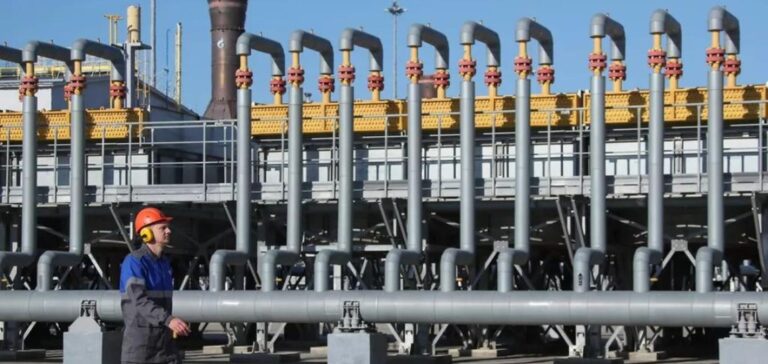Russian gas flows to Europe reached a seven-month high in July, thanks to record deliveries via the European section of the TurkStream pipeline, according to an August 2 analysis of data from S&P Global Commodity Insights.
Record Russian gas flows to Europe in July despite historically low supplies
Total Russian pipeline flows to Europe – excluding Moldova – reached 2.28 billion m3 in July, the highest level for pipeline deliveries since December 2022. Despite this increase, supplies from Russia remain historically low and well below the recent monthly peak of just under 10 billion m3 in March 2022.
Russian pipeline deliveries to Europe are currently limited to flows via Ukraine, which enter at the Sudzha point on the Russian-Ukrainian border, and via the European section of TurkStream. Deliveries to Europe have been progressively reduced until 2022, with deliveries via the Yamal-Europe and Nord Stream pipelines halted, and a sharp reduction in deliveries via Ukraine. The two-lane Nord Stream pipeline was then hit by a suspected sabotage attack at the end of September 2022, rendering the system unusable.
TurkStream: Record Russian gas deliveries to Southeast Europe in July, with Hungary and Serbia in the front line
Supplies via TurkStream to Southeast Europe rose sharply in July, reaching a record monthly level of 1.29 billion m3, according to the data. The previous monthly record was 1.28 billion m3 in December 2021. Flows via TurkStream at the Strandzha 2 entry point on the border between Turkey and Bulgaria averaged 42 million m3/day in July, peaking at almost 46 million m3/day on July 14.
Two of the main beneficiaries of gas sent to Europe via TurkStream are Hungary and Serbia, two countries that still maintain relatively close ties with Moscow. Russia’s Gazprom said in April that it would consider supplying additional gas to Hungary in 2023, and set up a deferred payment mechanism for any further gas deliveries. In September 2021, Hungary signed a 15-year agreement with Gazprom for the supply of 4.5 billion m3 of gas per year. It also imported additional volumes of Russian gas in August, September and October last year, over and above contracted volumes, to ensure security of supply ahead of last winter.
Russian gas transported via TurkStream can also be delivered to Romania, Greece, Northern Macedonia and Bosnia-Herzegovina. The pipeline began flowing in January 2020. Russian deliveries via Ukraine to non-CIS countries totaled 1 billion m3 in July. This represents a slight decrease on June, with net deliveries to Europe at the Velke Kapusany interconnection point averaging around 32 million m3/day.
Reverse gas flows in Ukraine: Storage challenges in the face of growing European demand
Regular reverse flows were also observed at Velke Kapusany in July, with gas probably remaining in Ukraine for injection into storage reservoirs. The reverse flow reached up to 9 million m3/d towards the end of the month. In June, Ukrainian authorities said they were already observing injections of stored gas by non-Ukrainian companies after the government proposed using over 10 billion m3 of unused Ukrainian gas storage capacity this summer.
EU gas storage sites are already over 85% full, according to data from Gas Infrastructure Europe, and could run out well before the onset of winter, bringing unused Ukrainian storage capacity into play. Ukraine has a total underground gas storage capacity of around 31 billion m3, but it remains under-utilized. On July 27, the head of storage operator UkrTransGaz said that foreign companies were continuing to “actively” inject gas into Ukrainian storage sites.
“This season we are offering our foreign customers over 10 billion m3 for gas storage, and gas storage tariffs will not be changed until the end of 2024,” said Roman Malyutin.
European traders call for action to take advantage of gas storage opportunities in Ukraine
Last month, network operator GTSOU urged European traders to act “quickly” to use the country’s storage capacity to take advantage of current gas market conditions and the wide gap between summer and winter. Platts, part of S&P Global Commodity Insights, valued the August 1 TTF Winter 2023 contract at 45.63 euros/MWh, a premium of 18.38 euros/MWh to the anticipated monthly TTF price of 27.25 euros/MWh. Ukraine’s gas storage sites have been under-utilized in recent years, although stocks were increased to over 28 billion m3 in the summer of 2020 when European traders used the sites to store excess gas as part of the COVID-19 pandemic.






















